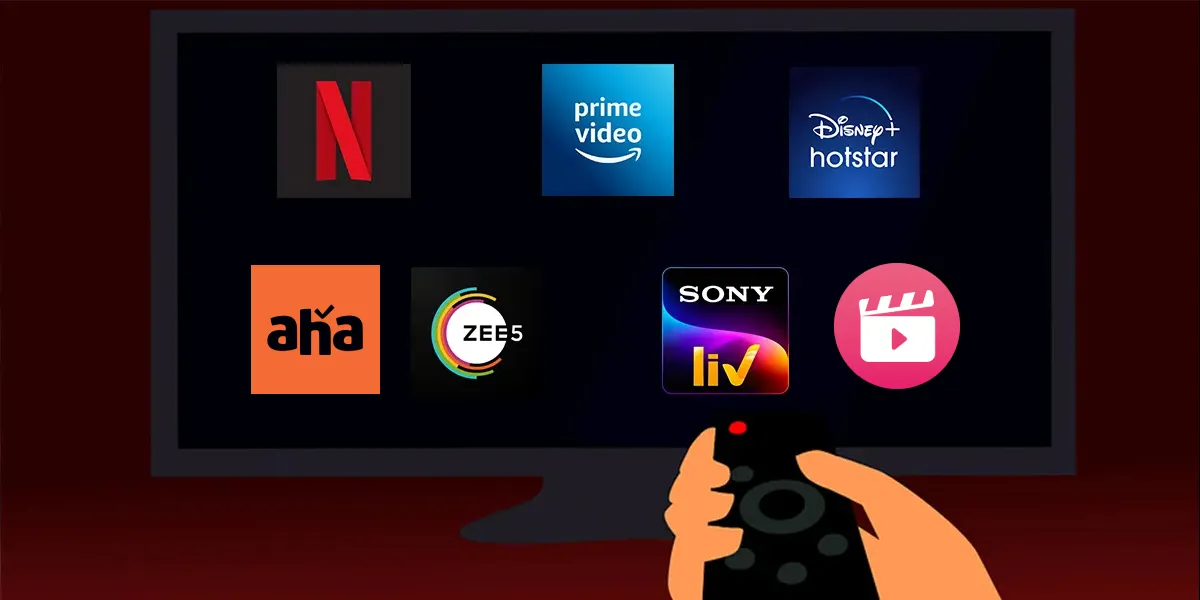Over the past decade, Over-the-Top (OTT) platforms have revolutionized the entertainment industry. With names like Netflix, Amazon Prime Video, and Disney+ at the forefront, OTT services have swiftly taken over the space once dominated by traditional cable TV and theaters. What’s driving this shift? Convenience, diverse content, and a personalized viewing experience. This article will explore how OTT platforms have changed the landscape of entertainment, the challenges they face, and what the future holds.
1. Redefining Convenience and Flexibility
One of the most appealing aspects of OTT platforms is their accessibility. They allow viewers to stream their favorite content anytime, anywhere. Gone are the days of adhering to strict broadcast schedules—OTT services put control in the hands of the viewer. Whether you’re commuting to work or relaxing at home, you can seamlessly switch between devices, continuing your binge-watching sessions on your own terms.
This flexibility has made OTT services a preferred choice for millennials and Gen Z, who value content that fits into their busy lifestyles. Additionally, multiple subscription models, from monthly to annual plans, cater to different budgets, making quality entertainment more accessible than ever.
2. An Explosion of Original Content
OTT platforms are not just about convenience—they’re also a hub for diverse, original content. Unlike traditional channels that often stick to formulaic themes, OTT platforms are known for experimenting with unique storylines and bold narratives. For example, shows like *Sacred Games*, *The Family Man*, and *Money Heist* broke stereotypes and gained global popularity.
With a focus on high-quality production, OTT originals often feature top actors, directors, and writers, making streaming services a competitive space for new content. In India, platforms like Zee5 and Hoichoi have tapped into regional markets, producing content in multiple languages and thereby broadening their audience base.
Devara Review : An Unoriginal Missed Opportunity
3. Impact on Theatrical Releases
The rise of OTT platforms has disrupted the traditional movie release model, especially during the COVID-19 pandemic, when theaters were closed. Many major films, such as *Ludo* and *Shakuntala Devi*, opted for direct OTT releases, sparking debates on whether theaters are becoming obsolete.
Although cinema lovers still cherish the theater experience, the convenience of home viewing has created a hybrid model. Today, many filmmakers are considering dual releases, premiering their films simultaneously in theaters and on OTT platforms to maximize reach.
4. The Growth of Regional and Niche Content
Another critical development in the OTT era is the surge in regional and niche content. While mainstream Hindi and English shows continue to attract large audiences, local-language content has gained significant traction. This trend reflects India’s diverse linguistic landscape, where platforms like Aha (Telugu), Hoichoi (Bengali), and Sun NXT (South Indian languages) are flourishing.
The rise of regional content has democratized the entertainment space, enabling smaller creators and regional talent to reach global audiences. In doing so, OTT platforms are not only promoting cultural diversity but also providing a platform for stories that might otherwise go untold.
5. Personalized Viewing Experience
OTT platforms employ sophisticated algorithms to tailor content recommendations based on individual viewing patterns. This personalized approach differentiates OTT services from traditional broadcasting, which typically offers one-size-fits-all programming. By analyzing user data—such as viewing history, genres preferred, and even time of day—streaming services curate a library uniquely suited to each user.
This strategy keeps viewers engaged, ensuring they spend more time on the platform. For example, Netflix’s personalized recommendations and auto-play features have proven highly effective in retaining users.
Best Performances of Alia Bhatt: A Deep Dive into Her Versatile Career
6. Challenges and Competition
Despite their rapid growth, OTT platforms face several challenges. Content piracy is a major concern, with unauthorized websites streaming shows and movies, leading to revenue losses. Rising production costs for exclusive content and securing talent have also put financial pressure on streaming services. Moreover, as more players enter the market, competition is intensifying, forcing OTT platforms to continuously innovate.
In India, government regulations are also shaping the OTT space. Recently, discussions around content regulation have gained momentum, which could impact the creative freedom that has been a hallmark of OTT platforms.
7. The Future of OTT Platforms
Looking ahead, the future of OTT platforms appears bright. With rapid advancements in technology, the next big evolution could be interactive storytelling, where viewers influence plot outcomes through choices—a concept already explored in Netflix’s *Black Mirror: Bandersnatch*. Similarly, the integration of Virtual Reality (VR) and Augmented Reality (AR) could make content more immersive.
As more people get access to high-speed internet and smart devices become more affordable, OTT platforms will continue to expand their reach. For India, where internet penetration is growing in rural areas, the regional content space will be a key growth area, further blurring the lines between urban and rural entertainment consumption.
Conclusion
OTT platforms have not just changed how we watch content; they have redefined what content is. With their convenience, diverse offerings, and innovative approach, these platforms have made a lasting impact on the entertainment industry. As the battle for viewership intensifies, the focus will be on creating high-quality, inclusive, and engaging content that resonates with audiences globally. The OTT revolution is here to stay, and its influence will only grow stronger in the coming years.




